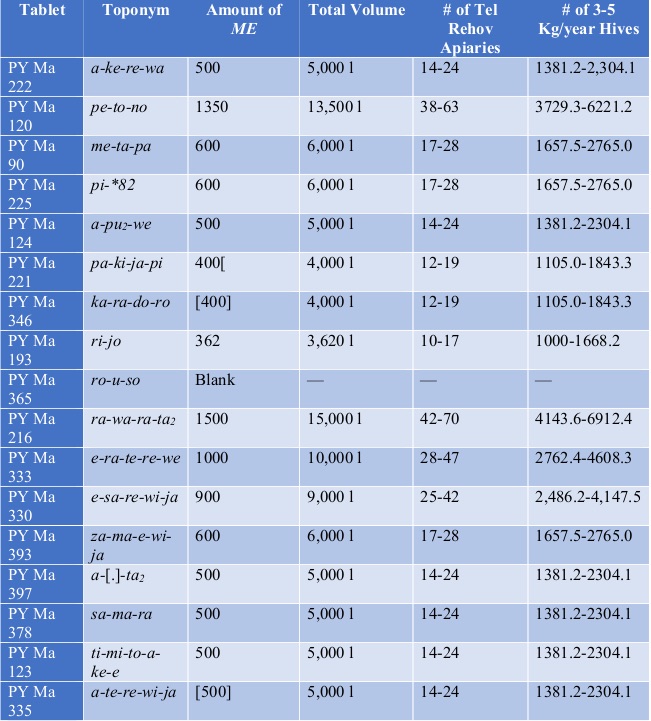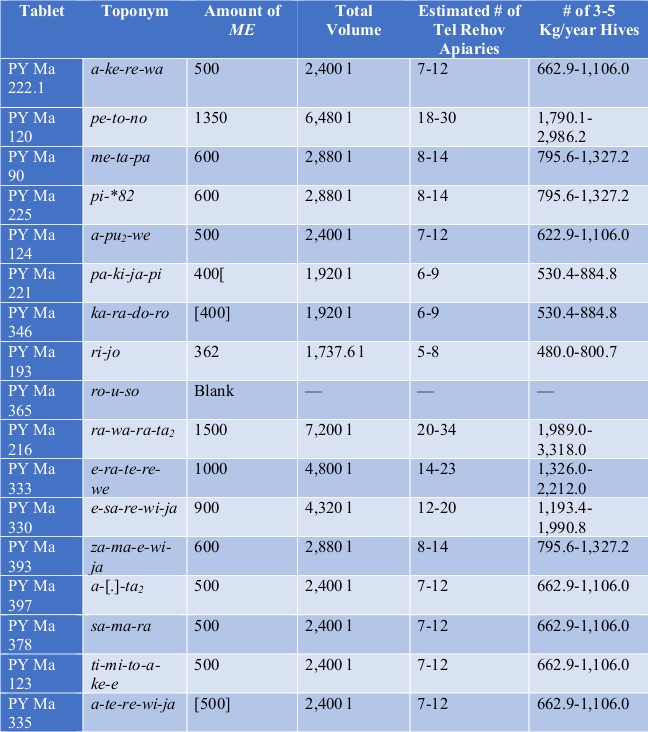MASt – Summer Seminar 2022 (Friday, July 8): Summaries of Presentations and Discussion
Topic 1: Presenting ‘Signs of Writing? Writing and Trade in the Late Bronze Age Eastern Mediterranean’: PhD dissertation presented by Cassandra Donnelly, defended on October 15, 2021, at the University of Texas; supervisor: Thomas G. Palaima; second supervisor: Nicolle Hirschfeld
§4. As part of the MASt mentor/mentee seminar, my presentation aimed to solicit feedback on directions for future research after the completion of my dissertation. To that end, I presented a summary of my dissertation Signs of Writing? Writing and Trade in the Late Bronze Age Eastern Mediterranean (supervisor: Thomas G. Palaima), my publications during and since my dissertation defense (Donnelly 2021b), and the directions of my current research. I finished the presentation by discussing three objects that epitomized the ongoing difficulties presented by the material, notably, questions of terminology (writing vs. mark, literacy vs. illiteracy, etc.) and typology (what counts as a Cypro-Minoan inscription, for instance). The presentation was followed by a fruitful question and answer session, reported below at §§25.1—31. I began the presentation with an overview of the state of knowledge regarding the Cypro-Minoan script, which has seen a relative fluorescence of attention in the past two decade

§5. The Cypro-Minoan script is unlike the other Aegean scripts in its chronological and geographical breadth (see Figure 1). It overlaps chronologically with both Linear A and Linear B and is the only “Aegean” script to have survived the Late Bronze Age collapse (ca. 1180 BCE; see Figure 2). Cypro-Minoan was likely derived from Linear A, but both the archaeological and textual evidence of Cretan-Cypriot contact during the period of script transmission (ca. 1525 BCE) is meagre. There are very few Cypro-Minoan texts from the first two centuries of Cypro-Minoan script use in the fifteenth and fourteenth centuries, a circumstance which hinders our ability to study the process of script transmission and adaptation. Further obscuring the connection between Linear A and Cypro-Minoan is the fact that Cypro-Minoan inherited a rough 60% of Linear A signs (depending on one’s count) [1] and jettisoned the ideograms, the only Aegean script to have done so. Cypro-Minoan signs are sometimes drawn into clay with a bladed implement, the dominant method of rendering signs in Linear A and Linear B texts, but at other times their components are impressed or “punched” into clay in a manner more like cuneiform wedges but made with a round-tipped stylus. The majority of Cypro-Minoan texts date to the LCIIC and LCIII periods, overlapping with the heyday of Linear B, but there is no suggestion of contact between the two scripts, whether in the textual, geographical, or archaeological record. The Cypro-Minoan script was written locally at Tiryns (Vetters 2011, Donnelly 2022), but only after the collapse of the Tyrinthian palace and the concomitant abandonment of Linear B.

§18.1. My dissertation consists of five chapters, which together assess the extent of the Cypro-Minoan scriptworld. The chapters are:
- Chapter One: Single-Sign Texts in the Study of Cypro-Minoan
- Chapter Two: Vessel Texts from the Eastern Mediterranean
- Chapter Three: The Diplomatics of Single-Sign and Multi-Sign Texts
- Chapter Four: Punctuation and Sign Use
- Chapter Five: Cypro-Minoan Texts Abroad
§20. To end my presentation, I present three text-bearing objects that represent my current areas of inquiry and the ongoing questions I have in my study of Cypro-Minoan. Here, I will present only one of these objects, in a move to obey copyright restrictions and keep this written report to a concise length (see Figure 5). The object, copper ingot BM 1897,0401,1535, encapsulates much of what is frustrating and joyful in my ongoing study of Cypro-Minoan. Ingot BM 1897,0401,1535 is a copper ingot that was “excavated” by the 1897 Turner Bequest Excavations as part of the Foundry Hoard (Crewe 2007). The ingot is currently housed at the British Museum. The image of the ingot produced here, along with its bibliography, is available free online for your perusal here [https://www.britishmuseum.org/collection/object/G_1897-0401-1535] thanks to the efforts of the British Museum’s Department of Greece and Rome. The copper ingot bears a single Cypro-Minoan script sign, CM 027, either stamped or molded into the metal, centered at the top of the ingot in between its two arms. I end this report with a short list of the challenges the ingot poses for me and my work, which are representative of my current lines of inquiry.

Literacy of the writer
Questions of audience
Characterization of script use
Donnelly’s Bibliography
Discussion following Donnelly’s presentation
Topic 2: Measuring ΜΕΛΙ: The Scale and Religious Significance of Apiculture in the Aegean Bronze Age
Introduction
Part 1: The Eastern Mediterranean Comparative Materials
Part 2: The Linear B Evidence












Part 3: Later Greek Literary Record: Homerica and Religious References for Bees and Honey
Conclusions: What We Can and Cannot Say About Apiculture in the Aegean Bronze Age
Petroll’s Bibliography
Topic 3: Examining the Crossroads of the Chi: The Lozenge as a Multivalent Representation of Christ and Opportunity for Spiritual Meditation in Early Medieval Insular Manuscripts
§79. The so-called Quoniam page on folio 188r in the Book of Kells further demonstrates the versatility of the lozenge, especially in the theological context of the apocalypse and material context of manuscripts. The first three letters of the incipit present the lozenge as a subtle, yet essential focal point rendered as central figure in this geometric composition. The letters Q, U, and O, presented as a Greek Omega, [2]
are highly abstracted and appear to form an ornate book cover. More specifically, the rectangular Q frames a smaller rectangle, richly bordered with red, purple, and golden yellow pigments and designs, that contains a central lozenge, which in turn frames the U and O/Omega.
§82. Folio 796v in the Codex Amiantinus presents lozenges as a depiction of gemstones [3] adorning the representational figure of Christ, who sits enthroned in all his divine glory with the four evangelists and their symbols surrounding him, i.e. in the Maiestas Domini pose, associated with the apocalypse. Darby points out that the book held by Christ forms the center of the folio as well as the point of intersection created by tracing lines between the books held by the evangelists in this illumination, thus displaying “a new creation formed by the harmonious meeting of its constituent parts” (Darby 2017:364).
§83. This composition’s implicit Chi cross shape resonates especially with Justin’s Apologia 1.6, which evaluates Platonism in a distinctly Christian lens: “What has been said in the Timaeus to explain the world has also been said about the Son of God … He made him in every way like a Chi.” [4] Furthermore, the heavens surrounding the figure of Christ are depicted with concentric bands of deep blue pigment adorned with small groups of five white dots arranged in equilateral cross shapes; these dots are reminiscent of the abstract Chi cross shapes inside the lozenges on the bookcase depicted in folio 5r and perhaps represent the starry heavens.
Lowell’s Bibliography
Comments following Petroll and Lowell’s presentations
Comment session bibliography
Footnotes
[ back ]
1.
The Cypro-Minoan signary remains un-fixed. The high count is ca. 100 and the low count is ca. 60. For an overview, and an argument for the low count, see Valério 2016:73-79.
[ back ]
2.
Tilghman notes that the scribe(s) composing this illumination may have been motivated to flaunt his knowledge of Ancient Greek, which was especially prized in the medieval Insular world (Tilghman 2011:292) as knowledge of Ancient Greek was considerably harder to access due to its linguistic and geographical distance from Insular peoples.
[ back ]
3.
Of note, the term lozenge is thought to derive from the Latin lausiae lapides, eventually morphing into the word lozenge in Old French by circa the thirteenth century.